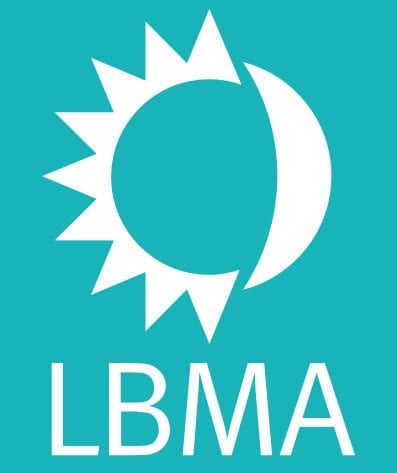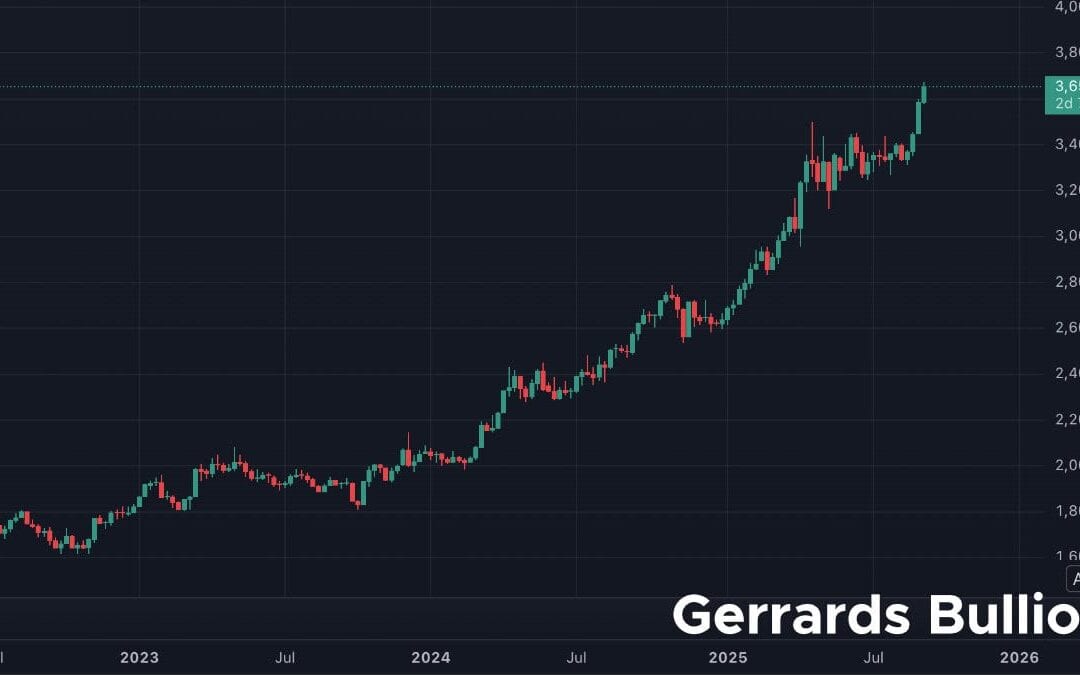2025 has marked an extraordinary chapter in gold’s enduring history, with the metal surging to an all-time high reaching over £2,600 per ounce in early September. This dramatic ascent has been propelled by a perfect storm of economic instability and aggressive trade tariffs imposed by the US under President Trump – policies which have amplified fears across stock markets and shaken confidence in currency systems worldwide. As investors seek protection from mounting uncertainty, gold’s role as a universal safe haven has never been clearer. Its meteoric rally this year not only reflects immediate financial anxieties but also echoes a century of similar historic surges whenever crisis grips the globe: from the Great Depression, world wars, and oil shocks, to the financial meltdown of 2008 and the geopolitical turmoil of today. In a world where markets are increasingly unpredictable, gold’s enduring strength stands as both a shield against volatility and a testament to its power to preserve wealth through any upheaval.
The Great Depression (1929–1939)
The 1929 stock market collapse didn’t just wipe out fortunes – it shattered public trust in banks, government, and currency itself. Bank failures multiplied (over 4,000 in the US alone), destroying savings and livelihoods and conjuring national despair. Deflation spiralled: prices of goods dropped, but unemployment soared, pushing families into poverty and eroding confidence in economic systems. Paper currency seemed worthless – every dollar bill could depreciate overnight. People scrambled for anything stable, turning overwhelmingly to gold. Fear ignited a run on gold reserves; individuals, corporations, and foreign governments drained the Federal Reserve, threatening the dollar’s value. Sensing imminent collapse, President Roosevelt moved dramatically: he suspended the gold standard and banned private citizens from owning gold. Americans had to turn in their gold at a fixed price, and the Gold Reserve Act of 1934 then revalued gold sharply upward from $20.67 to $35/oz, a massive 70% increase, fuelling a rush toward this haven. Globally, these policies rocked other markets – Britain, India, and other economies saw trade dry up, agricultural distress deepen, and gold’s appeal intensify in local culture as well as finance.
World War II and Aftermath (1939–1945)
World War II unleashed chaos: borders vanished, currencies collapsed, industries were obliterated, and millions of lives were disrupted. In the wake of Nazi invasions and Allied counterattacks, gold became the only constant. Central banks and wealthy individuals rode out uncertainty by hoarding and moving gold secretly across borders – neutral Switzerland especially saw inflows. Governments printed money in record amounts for war funding, stoking fears of inflation that further boosted gold’s magnetism. Yet unlike other crises, the US set a strict $35/oz limit through the Gold Reserve Act, keeping the official price stable, though black-market rates often soared where central authorities lost control. After the war, the Bretton Woods Agreement in 1944 created a new system: global currencies tied to the wary but powerful US dollar, which itself was convertible to gold at $35. The dollar became the backbone of international trade, and the world’s gold reserves shifted toward the US, cementing gold’s reputation as a universal benchmark.

Collapse of Bretton Woods and “Nixon Shock” (1971)
By the late 1960s, the Bretton Woods system strained under soaring US trade deficits and lavish money printing (wars, inflation, foreign aid, domestic spending). Nations worldwide cashed in their dollars for US gold, depleting reserves. France, under President de Gaulle, aggressively exchanged dollars for gold, draining the US’s vaults. Britain and others soon followed. In August 1971, President Nixon stunned financial markets by ending dollar-gold convertibility – a global chain reaction ended the gold standard and ushered in fiat currencies, subject to political whim as much as economic discipline. People worldwide woke to see their paper money suddenly “unmoored” from anything tangible. Gold’s price exploded from its $35/oz peg to $183.77/oz by 1974 – a rise of more than 400% in just three years. Investors, spooked by inflation and monetary chaos, poured into gold as the last anchor of trust. Central banks began hoarding bullion for stability, and gold’s new status as a freely traded commodity was established.
The 1970s Oil Crisis and Stagflation
Two oil shocks define this era. In 1973, the Yom Kippur War saw Arab nations embargo oil shipments to the West, quadrupling prices. Again in 1979, the Iranian Revolution spurred another global supply squeeze, doubling oil costs almost overnight. Businesses and consumers alike faced surging prices, plunging economies into stagflation – a toxic mix of inflation (rising living costs) with economic stagnation (job losses, slow growth). With fiat currencies weakened, gold became a vital shield. Inflation made real savings and investments precarious, but gold’s tangible value provided security and a hedge against price volatility. The US dollar lost ground in global markets, cementing gold’s importance. Gold prices multiplied by 13-fold from 1973–1980, peaking at $850/oz, equating to a stunning 1200% surge. It became a textbook example of gold’s ability to preserve wealth when all else falters.
Black Monday (1987)
October 19, 1987, remains infamous for the largest single-day percentage drop in stock market history: the Dow plunged 22%. Weeks and months before, stock prices soared amid low regulation and cheap credit; underneath, cracks spread as central banks began raising rates and trade balances worsened. The crash brought panic. Investors lost confidence in equities and the US dollar weakened. Many turned to gold, which saw demand spike by nearly 25% in the aftermath: prices jumped from $400/oz (Jan 1987) to $499/oz (Dec 1987), though the rally was shorter-lived compared to past upheavals. Banks, mutual funds, and individual investors bought gold to buffer volatility, but the market soon stabilized, demonstrating how gold can absorb “shock” demand during brief episodes of crisis.
The Asian Financial Crisis (1997–1998)
The “Asian Tigers” – Thailand, South Korea, Indonesia, and others – were economic success stories until unsustainable borrowing and asset bubbles triggered collapse. By 1997, currency pegs to the US dollar made exports vastly expensive and vulnerable. As the dollar strengthened, local economies faltered, and huge debts became unmanageable. Thailand was first to fall, devaluing the Baht in July 1997 and setting off a domino effect. Currency devaluations and stock market crashes rippled through the region, banks failed, and social unrest grew. With savings threatened and financial institutions crumbling, gold demand surged across Asia. Central banks bought gold for stability, while households tapped it for emergency wealth. Prices rose, initially to $383/oz (Dec 1997), before stabilizing as global aid and reforms slowed the panic. This crisis taught the world that even regional shocks can wield outsize global impacts, and highlighted gold’s role as a refuge from collapsing currencies.
Dot-Com Bubble Burst (2000–2002)
In the late 1990s, irrational exuberance gripped tech stocks – “dot-com” companies led IPO frenzies, and trillions were poured into business models that rarely turned a profit. The crash hit in 2000–2002: scores of companies failed, investors lost billions, and recession fears spread. Wall Street’s optimism evaporated. As stocks crashed, capital rotated into safer assets – gold, bonds, and hard currency. The US economy weakened, the dollar fell in value, and gold saw a moderate rally from $282/oz (Jan 2000) to $320/oz (Oct 2002), an increase of about 13%. Pension funds and family trusts reallocated toward gold, and its steadying effect became evident, despite the relatively modest price movement compared to other crises.
Global Financial Crisis (2008–2011)
The collapse of the US housing market triggered the worst economic crisis since the Depression. Risky “subprime” mortgages, defaults, and toxic asset securities cascaded through banks, investment firms, and governments. Lehman Brothers’ bankruptcy in 2008 symbolized global panic. Stock markets plunged, unemployment spiked, and world growth evaporated. Investors everywhere rushed to gold. Bank failures sapped faith in the system; governments printed trillions for bailouts, raising inflation fears. Gold jumped from $870/oz (Jan 2008) to $1,096/oz (Dec 2009), eventually scaling $1,900/oz in 2011 – a more than 100% rise within three years. Gold ETFs saw record inflows, central banks, mutual funds, and individuals alike boosted holdings. The rally was so strong that, despite early dips from forced selloffs, gold proved itself the ultimate hedge against systemic risk and monetary expansion.

COVID-19 Pandemic (2020–2021)
Early 2020 brought a new kind of crisis: global health fears, government lockdowns, and massive economic contractions (millions lost jobs, businesses shuttered, international trade froze). Stock markets plunged, and even gold was briefly sold off for liquidity, as investors scrambled for cash to cover their losses. When the dust settled, central banks slashed interest rates to near-zero and governments issued unprecedented stimulus, causing inflation concerns. Gold responded: after an initial dip, it soared from $1,520/oz (Jan 2020) to a record $2,067/oz (Aug 2020), staying near $1,800/oz through the recovery phase. Global ETFs, funds, and households invested heavily in gold, confirming its safe-haven reputation amid truly new and unpredictable risks.
Russia-Ukraine War (2022–2023)
Russia’s invasion of Ukraine in February 2022 shocked the world, prompting severe economic sanctions, energy supply disruptions, and financial instability not just in Europe but globally. Oil and gas prices spiked, inflation rose in response, and investors once again fled to gold. Central banks globally increased bullion purchases to hedge against currency volatility and reduce exposure to the US dollar. Prices surged from $1,800/oz (Jan 2022) to $2,070/oz (Mar 2022) and have remained high as the conflict continues. Families in affected regions converted wealth to gold, and traders responded to rapid shifts, keeping the metal’s value high in uncertain territory.
Conclusion
From the agony of the Great Depression, the battlefields of WWII, and financial convulsions in Asia and the West, through to pandemics and wars, history proves that gold shines brightest when everything else dims. Its appeal is universal: a rare, tangible, non-correlated asset that preserves wealth and provides confidence, especially when paper currencies weaken or disappear. For investors, knowing when and why gold rallies is vital – its centuries of crisis performance make it an essential part of any robust, diversified portfolio. In today’s climate, the lessons are clear: when uncertainty reigns, gold stands taller than ever.
Disclaimer: Investments in bullion products are not FCA regulated. The value of your investment can go down as well as up. Past performance is not indicative of future performance.





